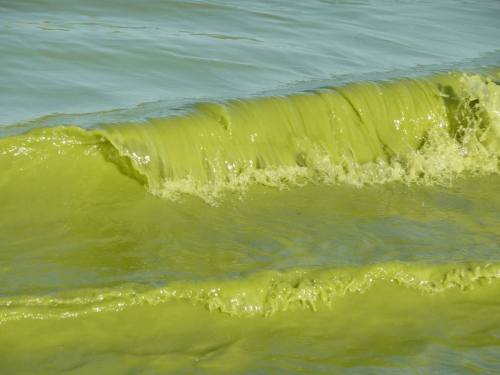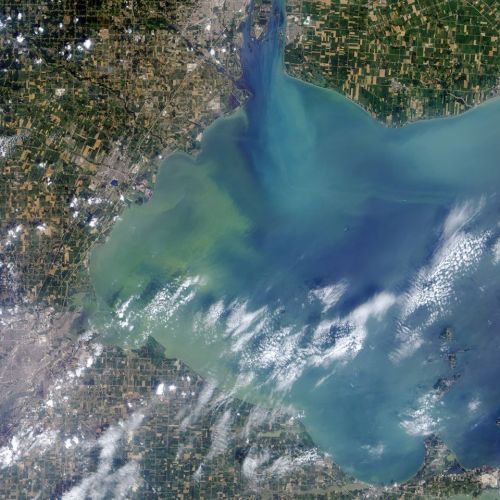Predicting the BloomsDuring a particularly bad algal bloom in the summer of 2014, residents of Toled
Predicting the BloomsDuring a particularly bad algal bloom in the summer of 2014, residents of Toledo, Ohio in the United States were told not to use their tap water for drinking, cooking or bathing because the water was toxic. The bloom of 2011 was so bad that Lake Erie turned a pea soup consistency. Although scientists know that algal blooms occur because of excess phosphorus and nitrogen running off into the lake, the affect of other factors on the blooms, such as wind, sunlight and precipitation, were relatively unknown. A new report from Ohio State University is shedding some light on how these factors interact with each other and the algae.The study, which looked at Lake Erie water between 2002 and 2012, ranked the interaction of nine environmental factors on each other and the blooms; these factors included wind, precipitation, solar radiation, nitrogen concentration, water temperature, and water quality. Using images from the Envisat satellite Medium Resolution Imaging Spectrometer (MERIS) courtesy of the European Space Agency, they looked at changes in color which indicate the presence of blue-green algae, the toxic algae responsible for harmful algal blooms. The two sets of data were then compared.Their research turned up some very interesting seasonal changes, including the impact increased solar radiation has on the algae in spring and summer. Summer and winter precipitation affects blooms by increasing algricultural runoff and feeding the algae. Wind had the greatest affect across all seasons. During low wind days when the water is calm, algae will float to the top, producing thick mats that can spread easily; on days with greater wind, the lake is more choppy, and the mats are unable to form.Hopefully, with more data and better models, it will be easier for scientists to understand, and ultimately predict, when algal blooms will be at their worst.For more information: http://news.osu.edu/news/2014/12/17/top-weather-conditions-that-amplify-lake-erie-algal-blooms-revealed/Picture Credit for Satellite Image: NASA/Earth Observatory http://earthobservatory.nasa.gov/IOTD/view.php?id=84125Picture Credit for the Algae Wave: NOAA Great Lakes Environmental Research Laboratory https://www.flickr.com/photos/noaa_glerl/- Colter -- source link
Tumblr Blog : the-earth-story.com
#algae#lake erie#toledo#pollution#nitrogen#phosphorus#runoff#great lakes#water#drinking water#fresh water#algal bloom#envisat#meris#color

